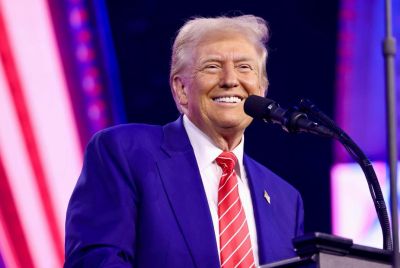China Intercepts Canadian Plane for Tracking North Korean Vessels That Violates UN Sanctions — Is It a Cover Up?
The Canadian pilot claimed that the North Korean boats look suspicious
Chinese fighter jets intercepted a Canadian surveillance aircraft over the East China Sea while it monitored North Korean vessels suspected of breaking United Nations sanctions. The encounter happened in international airspace as part of Canada's Operation NEON.
The Royal Canadian Air Force (RCAF) was carrying out a U.N.-mandated mission to track ships that are possibly helping Pyongyang evade sanctions. The close encounter has raised questions about Beijing's motives and whether it is trying to conceal North Korea's illicit maritime trade.
China Intercepts Canadian Military Plane
According to The Econo Times, the incident occurred when a Chinese fighter jet flew dangerously close to a Canadian CP-140 Aurora aircraft. The aircraft was performing surveillance duties in international airspace near Chinese territory. Reports said the Chinese jet came within around 200 feet of the Canadian plane, a distance considered unsafe for military encounters.
CBS News reported that their crew, which was onboard, captured the tense moment as the Chinese pilot issued radio warnings. The Canadian captain calmly replied, saying, 'I'm a Canadian aircraft operating in international airspace, carrying out the duties of all nations.'
The Chinese jet shadowed the Aurora for nearly half an hour before backing off. Hours later, another Chinese fighter armed with missiles repeated the manoeuvre. Despite the risk, RCAF officials said such encounters are not uncommon during sanctions enforcement missions. Brigadier General Jeff Davis stated, 'As long as things remain professional and safe, this mission continues unabated.'
Canadian Military Plane Tracking North Korean Vessels
The CP-140 Aurora was deployed under Operation NEON, Canada's contribution to the U.N. sanctions monitoring campaign. Operating from Kadena Air Base in Okinawa, Japan, its mission was to document and report ships suspected of helping North Korea bypass international restrictions.
The aircraft collects photos, videos, and radar data, later shared with the United Nations Enforcement Coordination Cell. The unnamed pilot said: 'There are definitely some boats that look more suspicious than others.'
His team identifies and tracks ships engaged in possible fuel transfers or smuggling, tactics long used by North Korea to escape U.N. oversight.
These missions are vital for enforcing U.N. resolutions aimed at curbing Pyongyang's nuclear and missile ambitions. Canada's participation highlights the growing concern among Western allies over North Korea's defiance of international law.
North Korean Vessels Allegedly Violate UN Sanctions
The suspected North Korean vessels are believed to have conducted ship-to-ship transfers of fuel, oil, and other restricted goods. Such actions directly breach U.N. Security Council sanctions first imposed in 2006.
Despite nearly two decades of restrictions, North Korea continues to develop nuclear weapons. According to the Stockholm International Peace Research Institute, the regime may now hold around 50 nuclear warheads with material for up to 90. Sanctions forbid fuel transfers, arms trading, and luxury imports — activities believed to sustain Pyongyang's weapons programme.
These illegal operations usually occur in remote waters, where monitoring is difficult. That challenge makes missions like Operation NEON essential but also dangerous, especially when foreign militaries intervene.
Is China Covering Up North Korea's Activities?
China remains North Korea's closest ally and main economic supporter. Analysts suggest Beijing may be protecting Pyongyang's maritime activities to avoid international scrutiny. The two nations, alongside Russia, have grown increasingly aligned in opposing Western sanctions.
A widely shared photo showed Chinese President Xi Jinping, Russian President Vladimir Putin, and North Korean leader Kim Jong Un attending a parade in Beijing, underscoring their strengthening ties.
By intercepting foreign aircraft, China might be attempting to discourage surveillance near its claimed maritime zones. It could also be shielding illegal trade between Chinese and North Korean vessels.
Canadian officials view the incident as an effort to intimidate U.N. monitoring missions. Yet, they insist they will not retreat. The Aurora's pilot said, 'It can add some stressors... but we try to mitigate as best we can and keep the aircraft safe.'
As tensions rise, the incident highlights growing friction between China and Western nations enforcing U.N. sanctions — raising fresh doubts about whether Beijing's actions are defensive or deliberately obstructive.
© Copyright IBTimes 2025. All rights reserved.





















